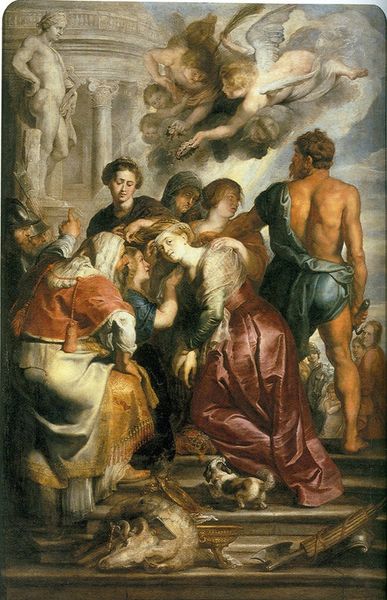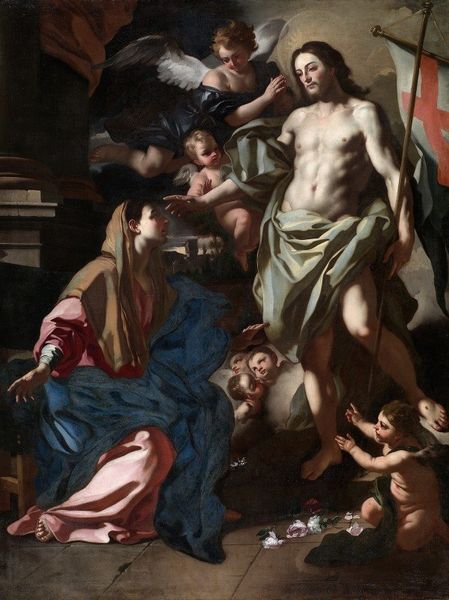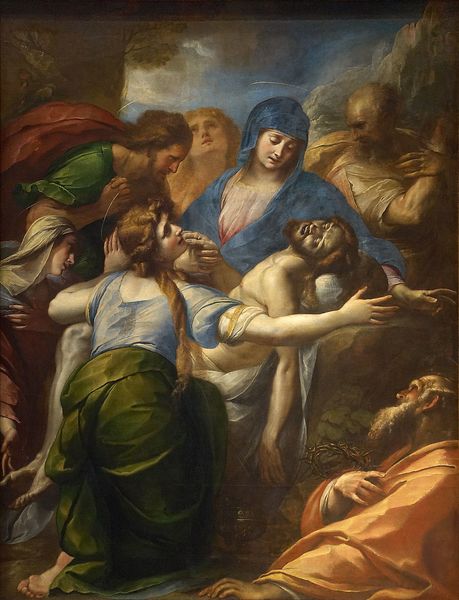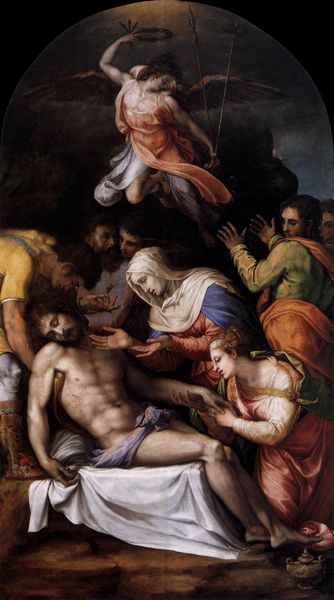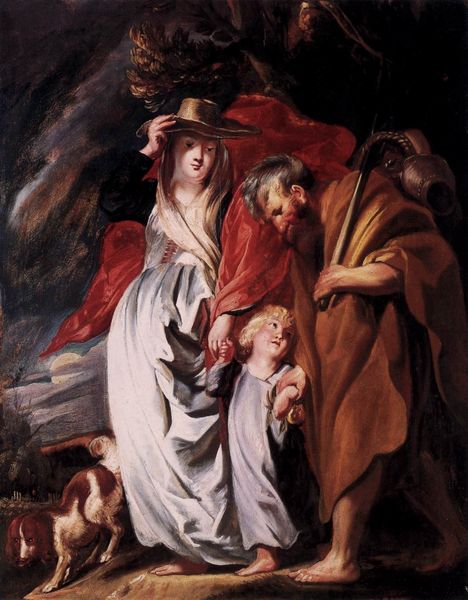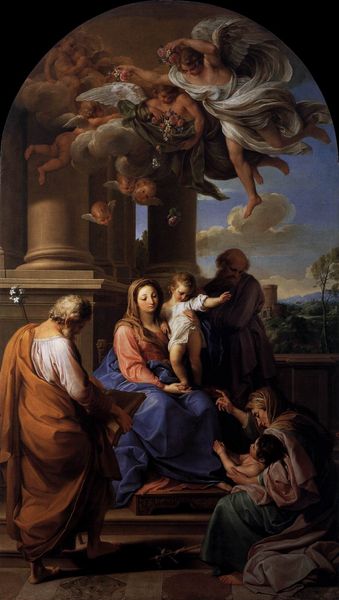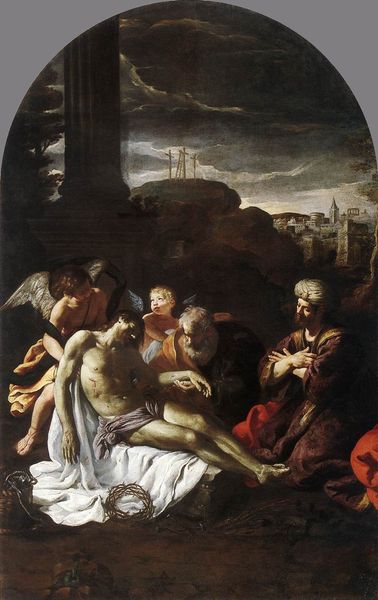
painting, oil-paint
#
portrait
#
high-renaissance
#
painting
#
oil-paint
#
figuration
#
oil painting
#
child
#
christianity
#
genre-painting
#
history-painting
#
italian-renaissance
#
christ
Copyright: Public domain
Curator: Let’s spend a few moments considering Correggio's “Madonna with Saint Jerome,” an oil on canvas completed around 1522, and a prominent example of High Renaissance artistry. It resides here in the Parma National Gallery. What are your initial thoughts? Editor: It’s luminous. Almost unsettlingly so. There’s a kind of... manufactured grace. The materials here suggest a deliberate crafting of beauty, rather than its natural occurrence. Oil paints allowed for such controlled blending. Curator: Absolutely. And consider the social climate: Correggio worked during a period where the church heavily influenced artistic production, commissioning works that reinforced religious doctrine. This work emphasizes divine motherhood and scholarly piety. Editor: Yes, but look at the labor involved. Grinding pigments, preparing canvases… and who paid for the ultramarine blue in Mary’s robes? These things aren’t just "divine." They are the products of human work and economic exchange. Curator: True. The materials indicate patronage. But the image served a public function as well, shaping perceptions of faith, familial ideals, and perhaps even offering a sense of comfort during times of plague and warfare. Editor: What strikes me are the angels. They seem almost... bored? One’s fiddling with Mary's hand, not exactly radiating holiness. This could be because artists used local children from lower-class backgrounds as models for such figures. Curator: That’s an astute point about how artists interpreted religious themes within their own social context. But do you see how St. Jerome’s aged body contrasts with Christ's youth? The Church's continuity and eternal truths are implied in this artistic decision. Editor: Of course, and it makes me think of how this wasn’t simply 'art'; it was a carefully constructed object destined for consumption by a specific audience within a highly controlled system of production. Curator: In short, the "Madonna with Saint Jerome" beautifully illustrates both divine narratives and tangible, material conditions intertwined to generate lasting artistic, social and cultural relevance. Editor: Yes, an object that simultaneously embodies spiritual aspiration and reflects concrete, human realities in an interplay between its own time and later interpretation.
Comments
No comments
Be the first to comment and join the conversation on the ultimate creative platform.
